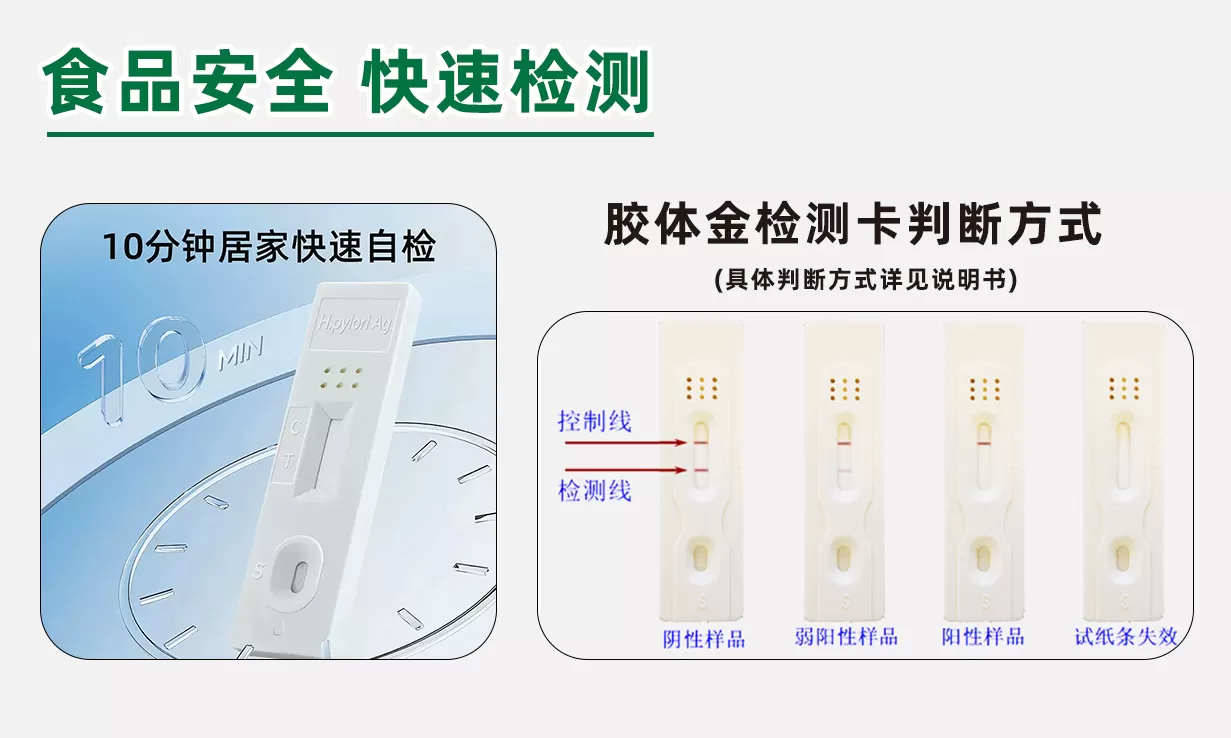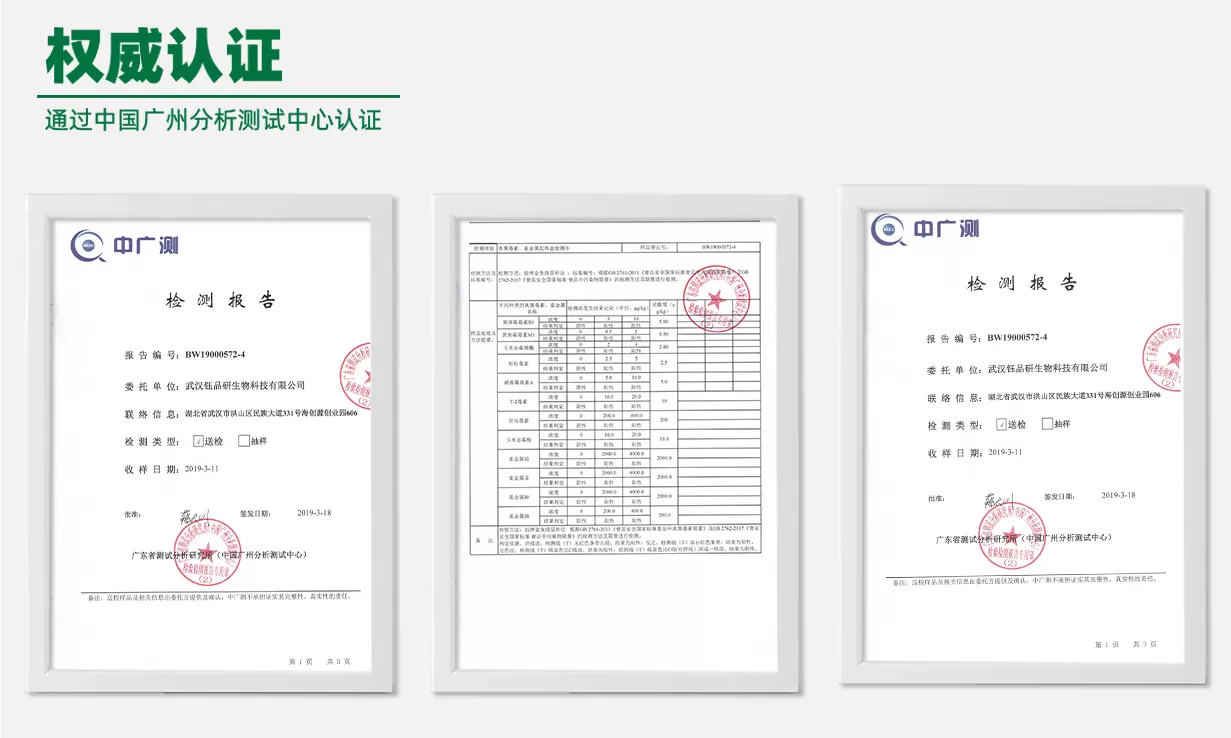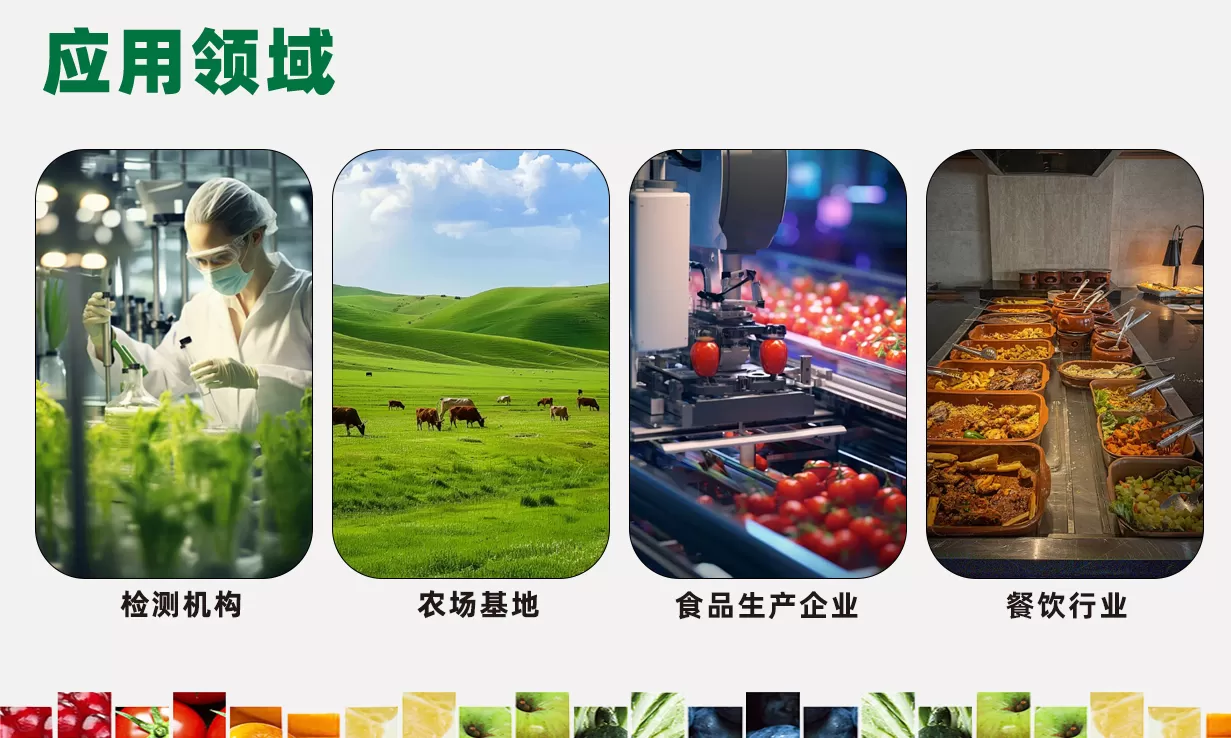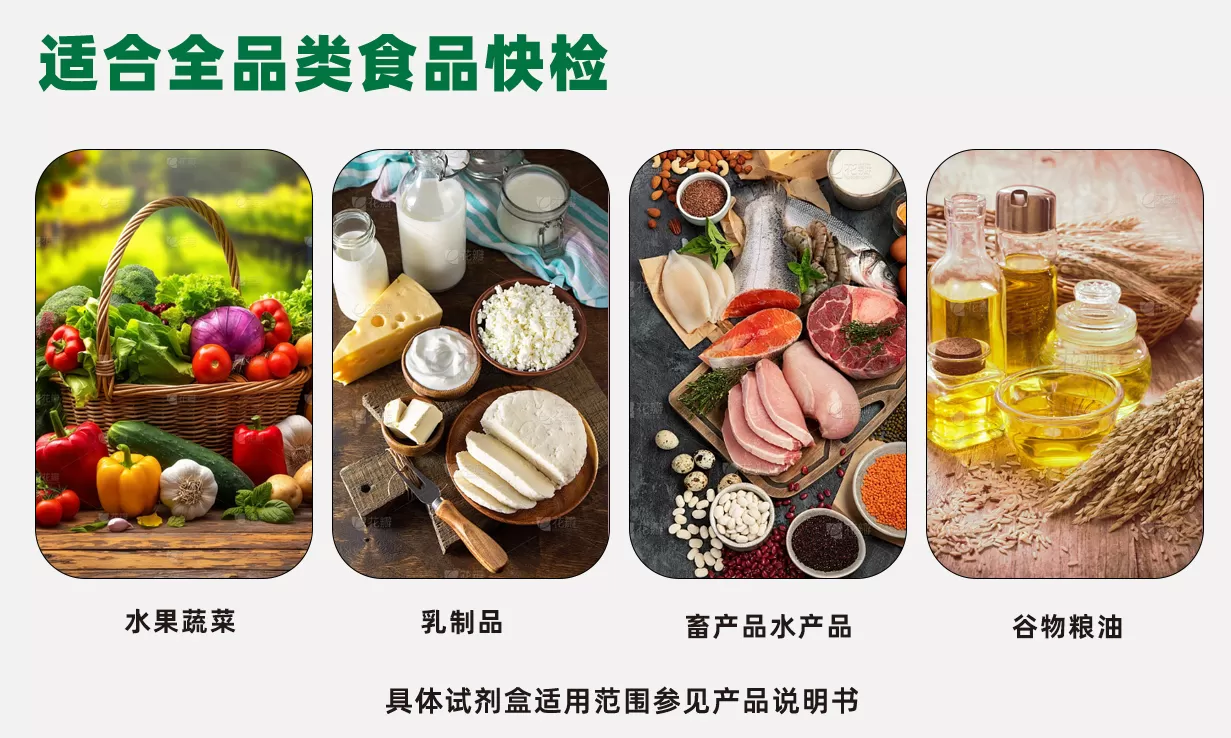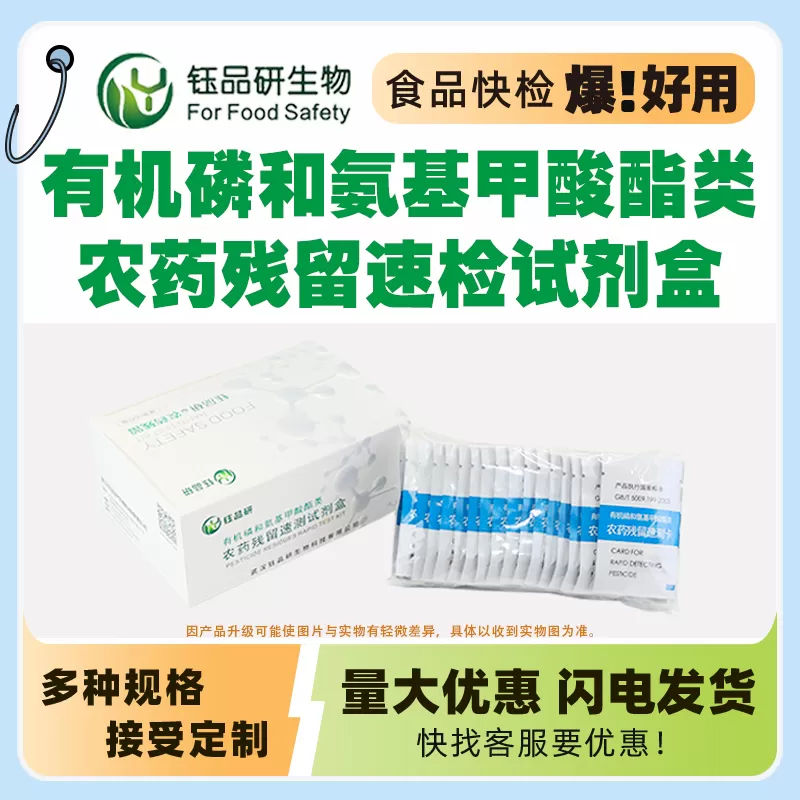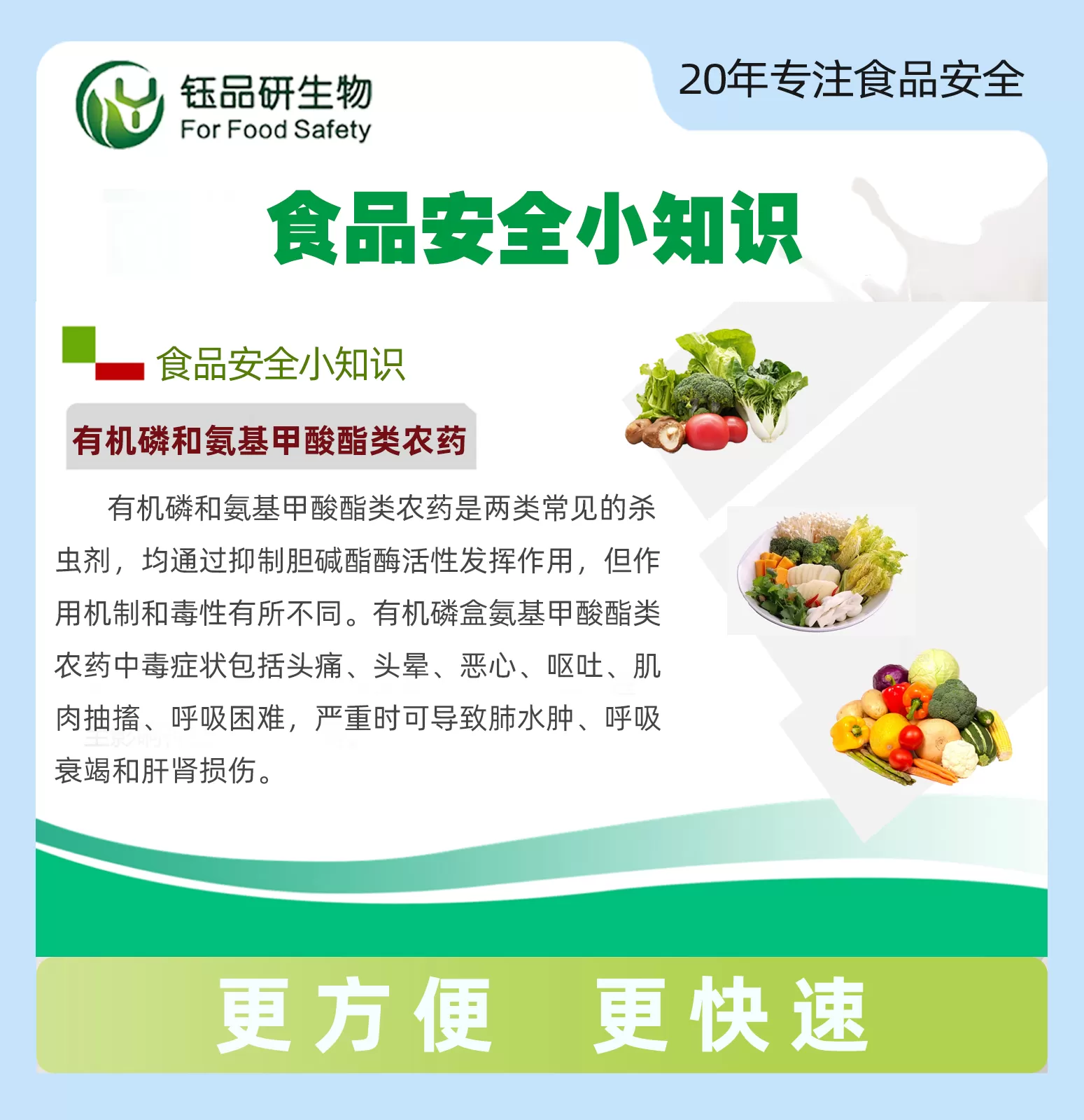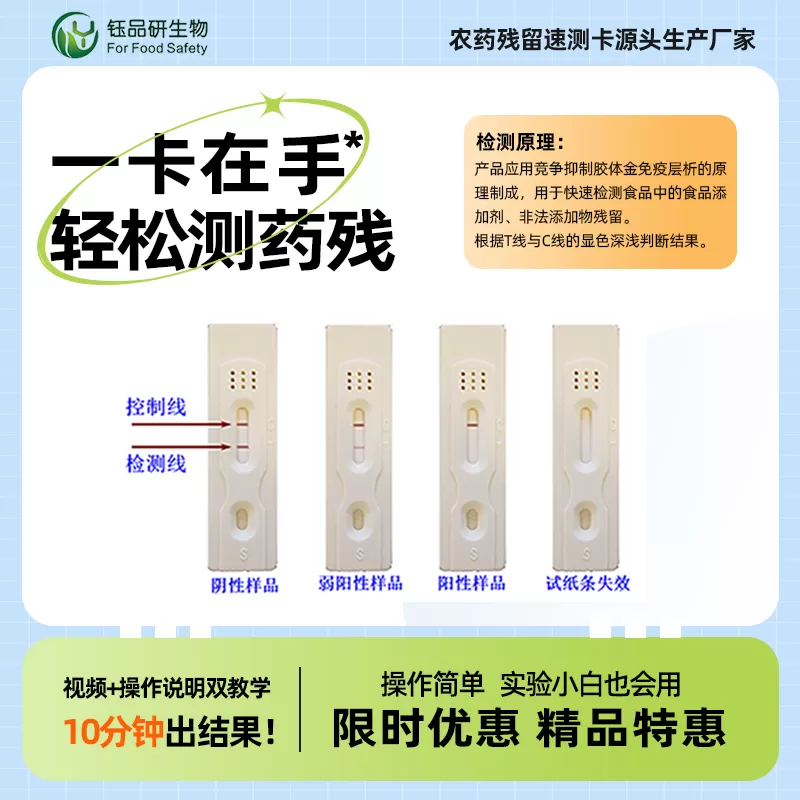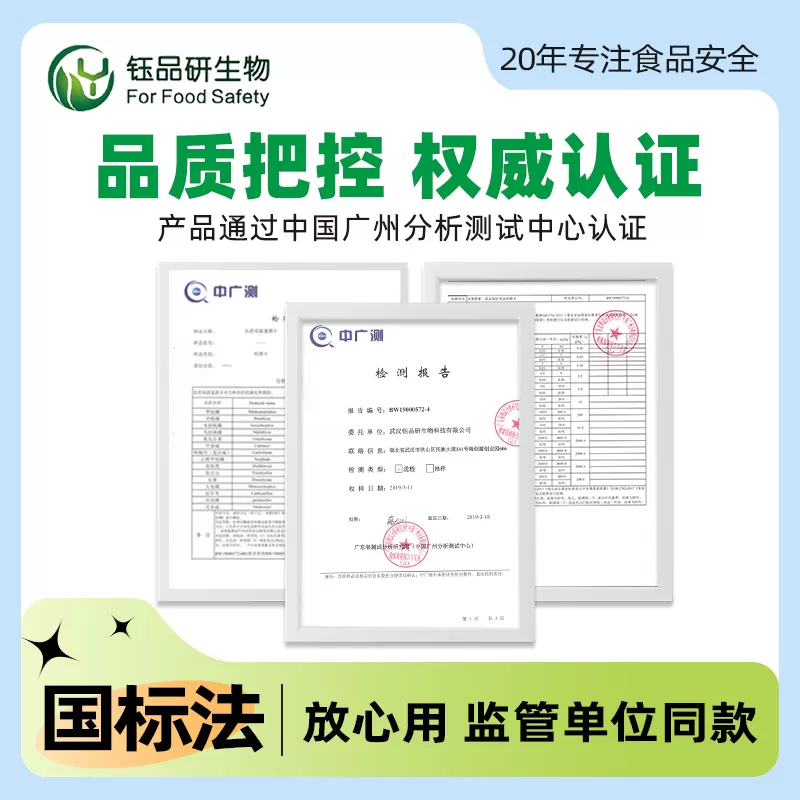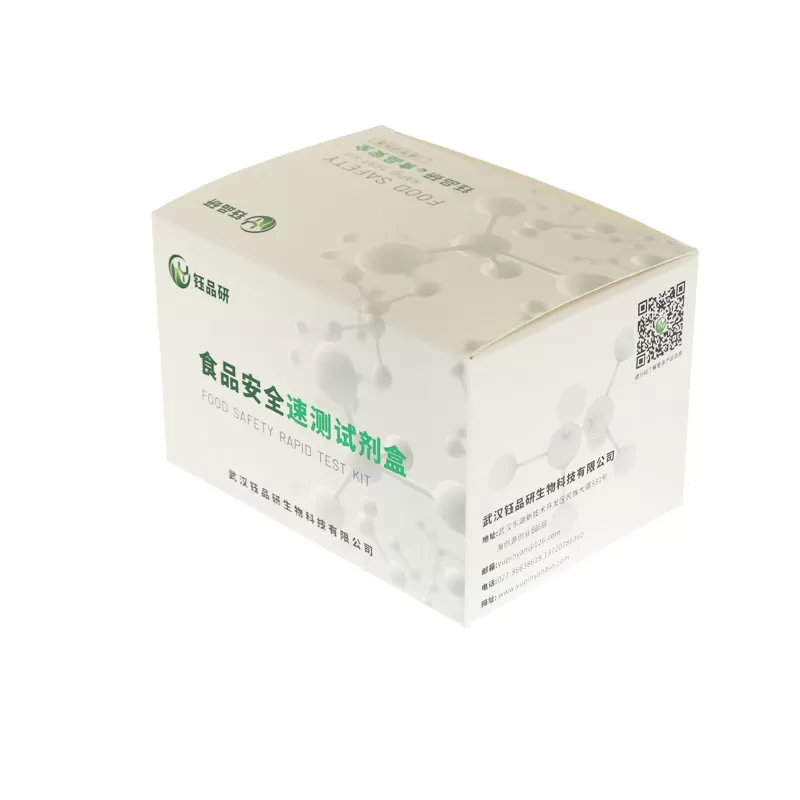Organophosphorus and carbamate pesticide residues quick test card instruction manual
[Product name] organophosphorus and carbamate pesticide residues quick test card
[Instructions for use]
pesticide residues quick test card method refer to the national standard GB/T 5009.199-2003, combined with the characteristics of this product, as follows:
Method 1: overall determination method (suitable for supporting agricultural residues instrument batch detection)
1, select representative vegetable samples, wipe off the surface soil, cut into about 1cm square fragments; weigh 5 grams of sample, add 10 ml of purified water or buffer solution, shake for 1 minute, let stand, absorb the supernatant as the liquid to be tested.
2, open the special pesticide residues card speed tester, so that the temperature is constant at 38-40 ℃;
take out the appropriate number of detection cards, tear off the transparent protective film on the quick test card, the detection card is folded in half and placed on the pesticide residues instrument, the white tablet part placed in the position of the instrument heating sheet, 100 microliters (3-4 drops) of purified water/sample solution to be tested were added dropwise on the white enzyme tablets, respectively, as a blank control card and sample to be tested card, heating reaction for 10 minutes;
3, closing the upper cover of the instrument, the red tablet coincides with the white tablet, and the upper cover is opened after the reaction for 3 minutes to observe the color change and judge the result.
Method 2: Surface determination method (suitable for home self-test of a small amount of samples)
1, wipe off the soil on the surface of vegetables, drop 5-6 drops of purified water or eluent on the surface of vegetables, gently rub another piece of vegetables on the surface of the droplet several times, and the cleaned liquid is used as the test liquid. Drop 3-4 drops on the white enzyme tablet. In addition, add 100 μl (3-4 drops) of purified water/eluent on the white enzyme tablet as a blank control card. Leave for more than 10 minutes, with the condition that it is placed in a thermostatic device at 37 ° C for 10 minutes, and the surface of the traditional Chinese medicine tablet must be kept moist during the placement process;
2, fold the quick test card in half, pinch it by hand for 3 minutes or the thermostatic device at 37 ° C for 3 minutes, so that the red tablet coincides with the white medicine, and observe the color change of the white tablet after the reaction for 3 minutes and judge the result.
[Results Judgment]
Negative: If the white tablet of the sample card is sky blue or similar to the blue of the blank control card, it is negative;
Positive: If the white tablet of the sample card does not change color, or the color development result is significantly different from the blue of the control card, it is positive, and it is a weak positive between the two, that is, the pesticide residue is relatively low. For samples with positive results, other analytical methods can be used to further determine the specific pesticide variety and content.
[Precautions]
1. Samples should not be rinsed with water. After selecting representative samples, wipe off the surface soil and other debris and then sample. In order to ensure that the sampling is representative, leafy vegetables generally take samples from the tip of leaves of different plants and cut them into about 1 cm square fragments; Fruits and vegetables are sampled from the epidermis of different individuals.
2, scallions, garlic, radishes, chives, celery, coriander, bamboo shoots, mushrooms and tomato juice contain plant secondary substances that affect enzymes, which are prone to false positives. When processing such samples, whole (body) vegetables can be extracted or surface determination method can be used. For some vegetables with high chlorophyll content, whole (body) vegetables can also be extracted to reduce the interference of pigments.
3, the operator should also avoid hands or other objects to contaminate the quick test card after tearing off the protective cover film.
4, under normal conditions, the contact reaction time of red tablets and white tablets is subject to 3 minutes. After 3 minutes, the blue will gradually deepen, and the color will gradually fade after 24 hours.
[Storage conditions and shelf life]
1, Storage conditions: 4 ℃ refrigerated storage.
2, shelf life: The shelf life of the product is 12 months, it is best to use it up within 3 days after opening. If it is not used up, it can be stored in a dry dryer and used up within 1 week.

